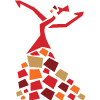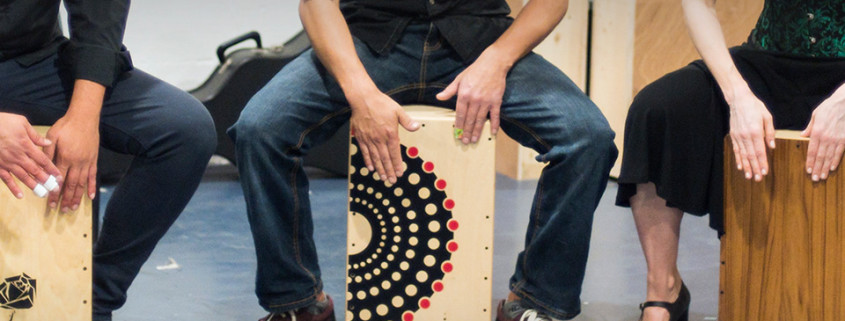Cajon – Origins in Peru & why we want to learn!
By Kasandra “La China”
July 25, 2007
Origins & Evolution
According to Wikipedia’s definition, the cajón is the most widely used Afro-Peruvian musical instrument in the 20th century. The instrument has been officially declared “Cultural Patrimony of the Nation” by the Peruvian government. It was developed in the 1800s, most likely in coastal Peru by slaves of West and Central African origin.
Knowing that the cajón comes from slave musicians in the Spanish colonial Americas, there are two complementary origin theories for the instrument. It is possible that the drum is a direct descendant of a number of boxlike musical instruments from west and central Africa, especially Angola, and the Antilles. These instruments were adapted by Peruvian slaves for the Spanish shipping crates at their disposal. In port cities like Matanzas, Cuba they used cod-fish shipping crates. Elsewhere, small dresser drawers became instruments.
Another theory posits that slaves simply used boxes as musical instruments to combat contemporary Spanish colonial bans on music in predominantly African areas. In this way, cajóns could easily be disguised as seats or stools, thus avoiding identification as musical instruments. In all likelihood it is a combination of these factors – African origins and Spanish suppression of slave music – that led to the cajón’s creation.
The cajón was introduced into flamenco in only the 1970s by guitarist Paco de Lucia. While in Peru, he was given the cajón by percussionist Caitro Soto. In the Paco de Lucia sextet, the cajon is played by Brazilian percussionist Rubem Dantas.
Why we want to learn!
In my years of traveling to Spain, I have seen hundreds of Flamenco shows and it is very rare these days to see a theatrical show without a cajón present on stage. Today it is interwoven with Flamenco sounds, chords, rhythm, soniquete, grooves and is an important part of modern Flamenco music. Purists still maintain that Flamenco should remain a cuadro (singer, guitarist, palmero, dancer), but the reality today is that the cajón adds a rich dimension to Flamenco music and is very slick in accompanying the guitar and baile.
Personally, I love it and I hope to see the Vancouver community embrace it, study it, practice it, grow and eventually perform it at a high level. The cajón is relatively new here and we have only had Alejandro El Chapin and Timo Lozano give workshops. But join us this summer, for my intro “Planta-Tacon-Tacon” version of Bulerias & Tangos on July 25 & 26th cajon workshop. Then join us again for Seattle’s David Carmona for his cajon crash course on August 11 & 12th at 11am for an inspiring guest artist workshop!
My favorite cajon performance ever was by Manolo Soler, a great dancer himself, who accompanied the rhythmic genius, Javier Baron, at the Festival de Jerez…where they were throwing once bitten green apples around on stage…don’t ask me what the significance of the apples were, but who cares, they rocked. I believe that a great cajon accompanist for baile, must also be a dancer him/herself.
Why learn? In a nutshell…
1. Because it’s cool to sit on a box with your hair down.
2. So we can make as much noise with our hands as our feet.
3. It’s another way to internalize Flamenco Compas, especially the contras (aka offbeats).
*Note: In La Sirena’s (our children’s instructor) latest travels to Albuquerque, her cante teacher told her specifically to play the cajon because it will help with the soniquete of her singing. I really get that because when playing the cajon major accents happen on the TAK which is the high pitched contra in most case.
4. It’s another way to participate in Flamenco. You don’t have to dance. A lot of husbands (aka Flamenco Widows) don’t want to dance. For the life of me, I do not understand why not!? But if you think Flamenco is too gay for your machismo, then learn how to do palmas and learn the cajon and accompany your wife…
Toca!





Leave a Reply
Want to join the discussion?Feel free to contribute!